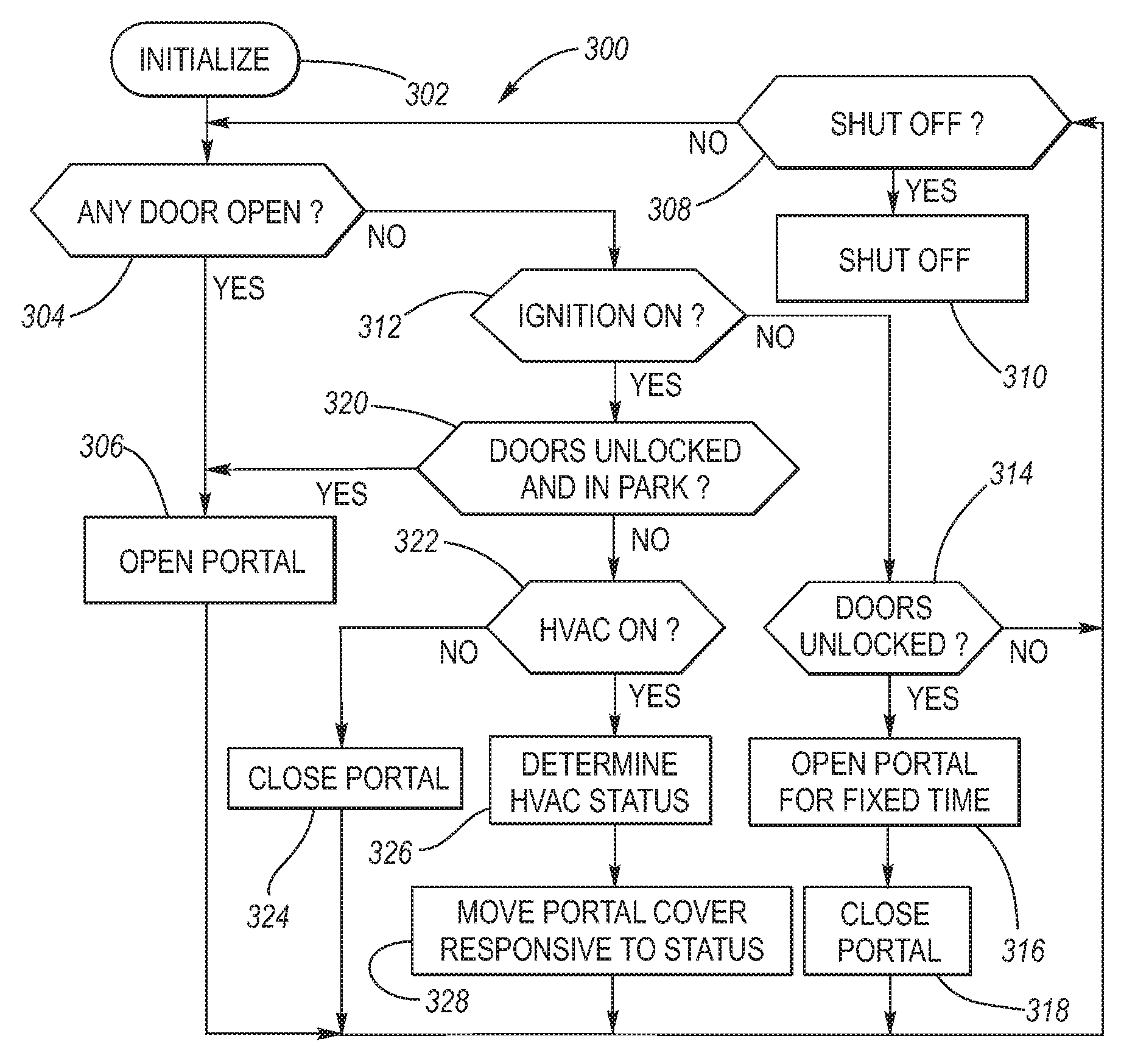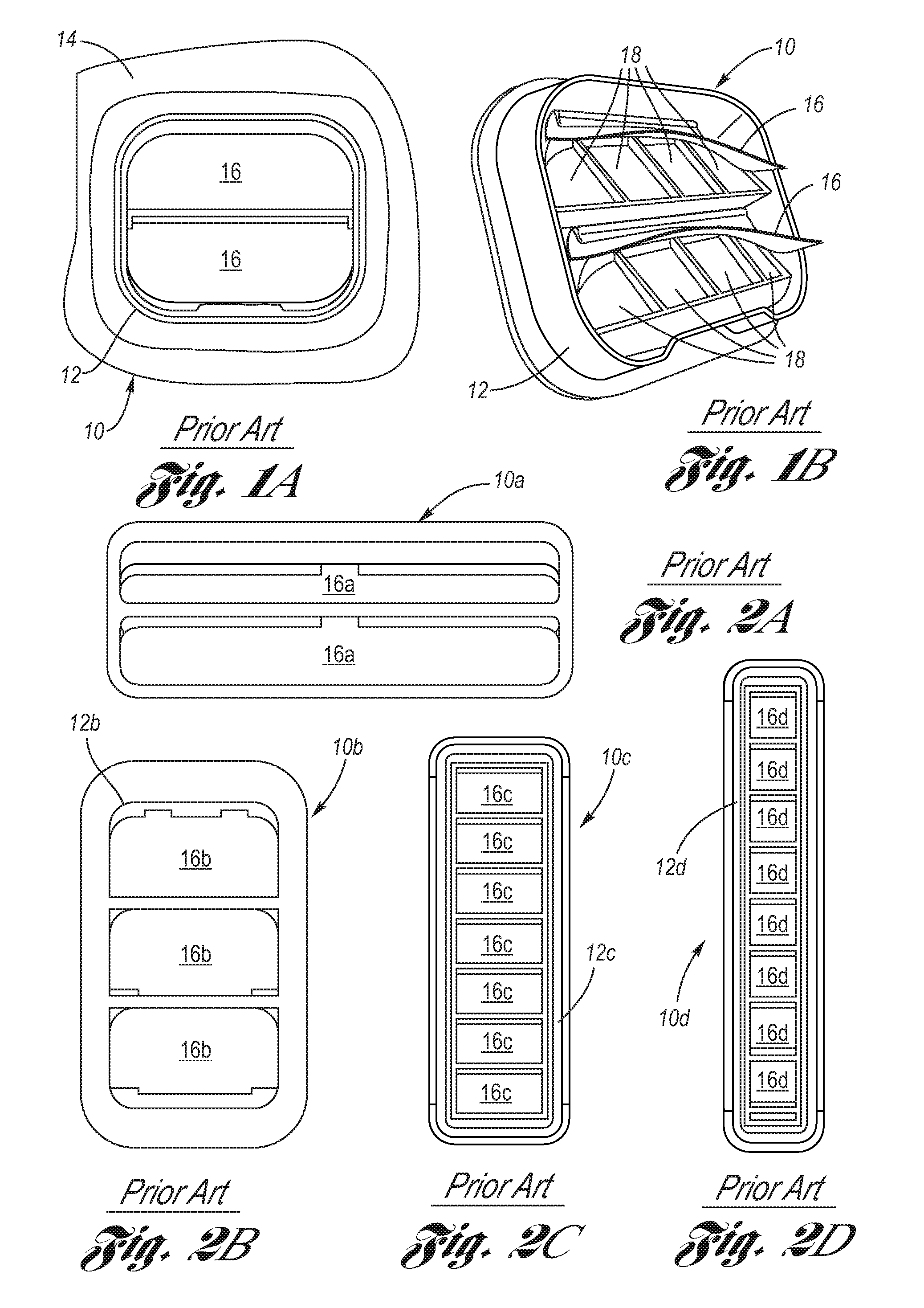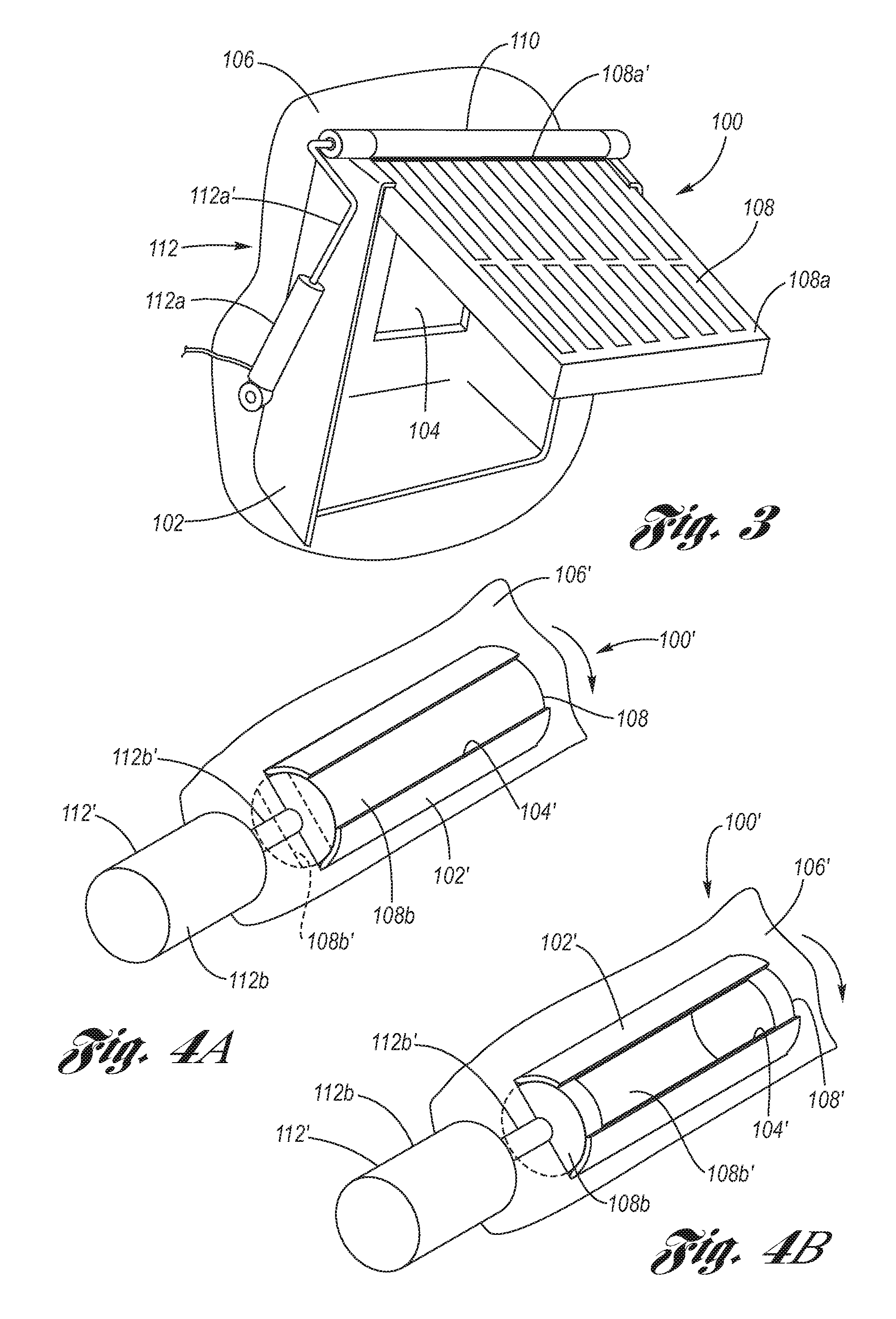Active Body Ventilation System
a ventilation system and active body technology, applied in the field of body ventilation, can solve the problems of air compression within the body, difficult door closure, and give any occupant the sensation of an ear pop at the door closure, so as to reduce the opening size of the portal and increase or decrease the size of the opening
- Summary
- Abstract
- Description
- Claims
- Application Information
AI Technical Summary
Benefits of technology
Problems solved by technology
Method used
Image
Examples
first embodiment
[0026]Referring firstly to FIG. 3, an example of an active ventilation unit 100 according to the active body ventilation system 200 (see FIG. 7) is depicted. The active ventilation unit 100 includes a portal housing 102 which defines a portal 104 having a predetermined portal opening size. The portal housing 102 is attached to a body wall 106 of the vehicle body such that the portal provides an opening therethrough which allows for air passage between the passenger compartment and the atmosphere exterior thereto. The active ventilation unit 100 further includes a portal cover 108 which is movably attached to the portal housing 102. The portal cover may have sound deadening material applied thereto as an added barrier to road noise passing therethrough. In the example of FIG. 3, the portal cover 108 is composed of a panel 108a, wherein a top edge 108a′ thereof is pivotally connected to hinge mechanism 110. The active ventilation unit 100 still further includes a portal cover actuator...
second embodiment
[0028]Referring to FIGS. 4A and 4B, an example of an active ventilation unit 100′ according to the active body ventilation system 200 is depicted. The active ventilation unit 100′ includes a portal housing 102′ which defines a portal 104′ having a predetermined portal opening size. The portal housing 102′ is attached to a body wall 106′ such that the portal passes therethrough and provides an air passage with respect to the passenger compartment and the atmosphere exterior thereto. The active ventilation unit 100′ further includes a portal cover 108′ which is movably attached to the portal housing 102′. In the example of FIGS. 4A and 4B, the portal cover 108′ is composed of an apertured cylindrical drum 108b rotatably mounted to the portal housing 102′. The aperture 108b′ of the drum 108b selectively aligns with the portal depending upon the rotational position thereof. The active ventilation unit 100′ still further includes a portal cover actuator 112′ for selectively moving the po...
third embodiment
[0029]Referring to FIGS. 5A and 5B, an example of a ventilation unit 100″ according to the active body ventilation system 200 is depicted. The active ventilation unit 100″ includes a portal housing 102″ which defines a portal 104″ having a predetermined portal opening size. The portal housing 102″ is attached to a body wall 106″ such that the portal passes therethrough and provides an air passage with respect to the passenger compartment and the atmosphere exterior thereto. The active ventilation unit 100″ further includes a portal cover 108″ which is movably attached to the portal housing 102″. In the example of FIGS. 5A and 5B, the portal cover 108″ is composed of a panel 108c slidably mounted, via a channel 120, to the portal housing 102″. The active ventilation unit 100″ still further includes a portal cover actuator 112″ for selectively moving the portal cover 108″ (i.e., sliding the panel 108c) between a fully open position as shown at FIG. 5A (whereat the panel has been slid ...
PUM
 Login to View More
Login to View More Abstract
Description
Claims
Application Information
 Login to View More
Login to View More - R&D
- Intellectual Property
- Life Sciences
- Materials
- Tech Scout
- Unparalleled Data Quality
- Higher Quality Content
- 60% Fewer Hallucinations
Browse by: Latest US Patents, China's latest patents, Technical Efficacy Thesaurus, Application Domain, Technology Topic, Popular Technical Reports.
© 2025 PatSnap. All rights reserved.Legal|Privacy policy|Modern Slavery Act Transparency Statement|Sitemap|About US| Contact US: help@patsnap.com



